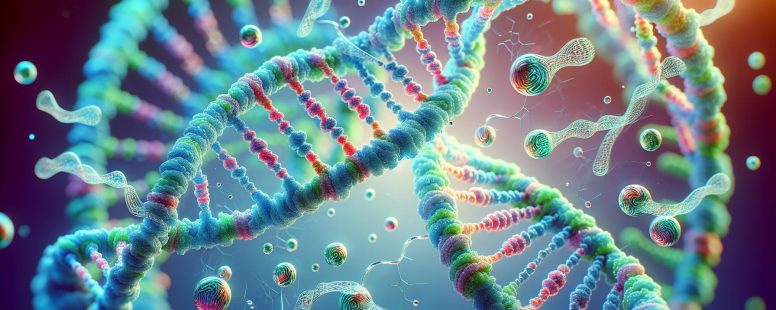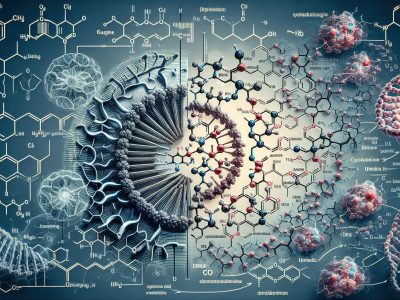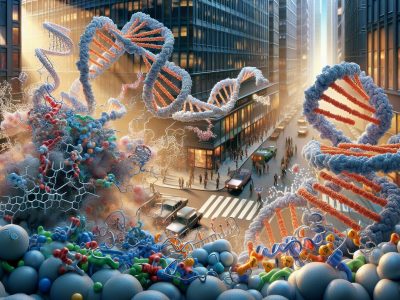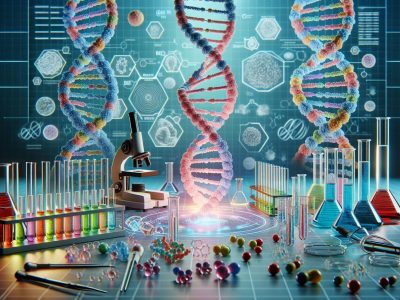Understanding the Difference Between DNA and Chromosomes: Key Insights into Genetics
Imagine holding the blueprint of life in your hands, a complex map that defines every trait, every feature. That’s what DNA is—a molecular marvel that holds the secrets of who you are. But how does this intricate code fit into the grand architecture of your cells? Enter the chromosome, the elegant structure that packages DNA with precision, ensuring it’s ready for life’s next chapter.
As you investigate into the microscopic world, you’ll discover that DNA and chromosomes are intertwined yet distinct. DNA is the thread, while chromosomes are the loom that weaves it into the fabric of life. Understanding their differences not only unravels the mysteries of genetics but also highlights the beauty of biological design. So, let’s begin on this fascinating journey, where the unseen becomes the key to life’s most profound questions.
Understanding DNA
DNA serves as the blueprint of life. It holds the genetic instructions needed for the development and functioning of living organisms.
Structure of DNA
DNA, or deoxyribonucleic acid, forms a double helix. This twisted ladder-like structure consists of nucleotides, each made up of a sugar, phosphate, and a nitrogenous base. Four bases—adenine (A), thymine (T), cytosine (C), and guanine (G)—pair specifically, with A pairing with T and C with G. These base pairs create the rungs of the ladder, held together by hydrogen bonds. The sequence of these bases encodes genetic information.
Function of DNA
DNA’s primary function is storing genetic information. It guides the synthesis of proteins through transcription and translation, with genes acting as specific sequences coding for proteins. DNA replication ensures genetic information is passed accurately during cell division. Variations in DNA sequences can lead to different traits and genetic diversity within populations. This genetic material, located within the cell nucleus, is essential for life, heredity, and evolution.
What Are Chromosomes?
Chromosomes are structures that organize and package your DNA within the cell nucleus. Each chromosome ensures DNA’s efficient management and proper segregation during cell division.
Composition of Chromosomes
Chromosomes, comprise long strands of DNA, are tightly coiled around proteins called histones. This combination of DNA and protein forms a complex known as chromatin. During cell division, chromatin further condenses to create the visible chromosomes crucial for genetic transmission. Human cells contain 23 pairs of chromosomes, totaling 46, representing a complete set of genetic material.
Role of Chromosomes in Genetics
Chromosomes play a vital role in the inheritance and expression of genetic traits. They ensure that DNA is correctly replicated and distributed as cells divide, maintaining genetic continuity across generations. Chromosomes housing genetic information, determine everything from eye color to susceptibility to certain diseases. In genetics, errors or mutations within chromosomes can lead to developmental disorders or genetic conditions. Understanding chromosome function is essential for deciphering complex genetic interactions and abnormalities.
Key Differences Between DNA and Chromosomes
DNA and chromosomes, two fundamental entities in genetics, have distinct yet interrelated roles in biology. Understanding their hierarchical structures and functional differences is crucial for grasping how genetic information is organized and utilized within cells.
Hierarchical Structure
DNA, as you’ve learned, forms the backbone of an organism’s genetic makeup. It’s made up of a sequence of nucleotides — each containing a sugar, phosphate, and nitrogenous base — which together constitute a genetic code. This code is crucial for determining everything from your eye color to your susceptibility to certain diseases.
Chromosomes, in contrast, act as containers for this DNA, wrapping long strands of it around histone proteins to keep it compact and manageable. Without chromosomes, DNA would be too unwieldy for a cell’s limited space. Think of chromosomes as the filing cabinets in which your body stores important files (DNA sequences) for quick access and efficient use during cell processes like replication and division.
Functional Differences
DNA primarily serves as the blueprint for cellular functions. It’s responsible for storing and transmitting genetic information, guiding the synthesis of proteins necessary for life. Protein synthesis begins when specific DNA sequences are transcribed into RNA, which then translates into various proteins.
Chromosomes ensure DNA’s genetic instructions are accurately replicated and evenly distributed during cell division. They play an essential role in genetic stability by preventing DNA damage and ensuring that every new cell receives an exact replica of the genetic material. Errors in chromosome division, but, can lead to genetic abnormalities or diseases, emphasizing their critical importance in maintaining genetic integrity.
By examining these components’ unique roles within the framework of cellular biology, you gain a clearer picture of how life perpetuates its complex design, balancing order and diversity.
Importance in Genetics
DNA and chromosomes hold integral roles in genetics through inheritance, medical implications, and overall biological functionality.
Genetic Inheritance
In genetics, DNA sequences determine the traits you inherit from your parents. Each parent contributes 23 chromosomes, forming pairs that carry genetic information for eye color, height, and other characteristics. The way these traits pass through generations depends on how chromosomes distribute DNA during reproduction. During meiosis, chromosomes undergo recombination, creating genetic variation essential for natural selection and evolution.
Medical Implications
DNA and chromosomes impact medical research significantly, particularly in understanding genetic disorders. Chromosomal irregularities like Down syndrome occur due to an extra chromosome 21, affecting development. Genetic mutations within DNA sequences can lead to conditions like cystic fibrosis or sickle cell anemia. Understanding these genetic components helps develop treatments and preventive strategies, enhancing healthcare approaches. Genetic testing employs DNA analysis to identify predispositions, enabling early intervention and personalized medicine strategies.
Conclusion
Understanding the differences between DNA and chromosomes is crucial for grasping the basics of genetics. DNA acts as the blueprint of life, encoding the information necessary for cellular functions and heredity. Chromosomes, on the other hand, serve as the organizational structures that package DNA, ensuring its stability and proper distribution during cell division. Recognizing their distinct yet interconnected roles helps you appreciate the intricate design of biological systems. This knowledge isn’t just academic—it’s essential for advancements in medical research, genetic testing, and the development of treatments for genetic disorders. As you explore these fascinating components, you’re better equipped to understand the complexities of life and evolution.
- Alternatives To Docker Desktop Extensions - November 26, 2025
- GPU Versus CPU: Understanding the Key Differences - November 26, 2025
- Twin Versus Twin XL: Understanding the Differences - November 26, 2025







